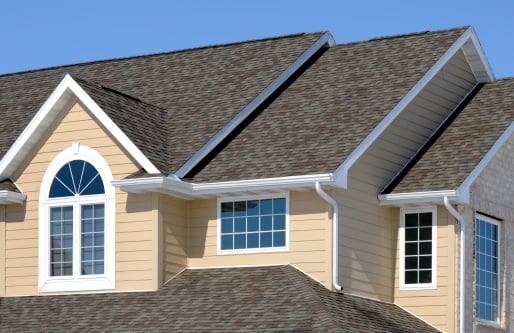ACV vs. RCV: Understanding Roof Insurance Coverage

Wind and hailstorms have been increasing in frequency in recent years. As a result, many insurance companies are shifting how they cover roof damage by offering Actual Cash Value (ACV) instead of Replacement Cost Value (RCV) policies.
What may seem like a lower-cost insurance option at first glance can lead to an unexpected financial burden after a storm hits. Understanding the difference between ACV and RCV can help you make an informed decision and avoid a costly surprise when you file a claim.
What’s the Difference Between ACV and RCV?
|
Term |
What It Means | What You Get |
| ACV (Actual Cash Value) | The depreciated value of your roof | Insurance pays: Repair cost minus depreciation minus deductible |
| RCV (Replacement Cost Value) | The full cost to replace your roof at today’s prices | Insurance pays: Repair cost minus deductible (no depreciation deducted) |
Do Insurance Companies Prorate Roof Replacements?
Yes. If you have an ACV policy, insurance companies prorate your roof’s value based on age and wear. This is why a 10-, 15- or 20-year-old roof may result in a much lower payout even if you’re paying your premiums on time.
Real-World Example: ACV vs. RCV in Action
Let’s say Smith and Doe live next door to each other in identical homes with the same roof. Both suffer roof damage in a storm. The only difference: Smith has ACV coverage, and Doe has RCV coverage.
The difference? Depreciation.
Smith’s insurance payout is reduced by the age of the roof. Doe receives a much larger reimbursement thanks to his RCV policy.
What Is the Actual Cash Value of a 20-Year-Old Roof?
If your roof is 20 years old and you have ACV coverage, your payout may be minimal or even zero, especially if the roof is considered to have outlived its useful life.
For example, if your $15,000 roof depreciates by $750/year, it would have $0 value left after 20 years. This would leave you to pay the full cost of repairs out of pocket (minus any deductible).
Will Insurance Cover an Old Roof?
It depends on your policy, and your agent can help provide you with specific advice on your situation.
- RCV policy: You may still receive full replacement cost coverage (minus your deductible).
- ACV policy: Your payout will be heavily reduced due to depreciation.
If your roof is over 10–15 years old, check with your insurer. Some companies apply stricter depreciation schedules or exclude coverage entirely past a certain age.
How Insurance Companies Determine the Age of Your Roof
Insurers may use several methods to determine roof age:
- Local property records and permits
- Visual inspection of wear and tear
- Prior claim history or information from previous carriers
If you don’t know the exact age of your roof, your insurer may assign a default depreciation value which could reduce your payout significantly.
Don’t Just Guess! Talk to an Expert.
Roof insurance coverage is too important to leave to guesswork. If you’re unsure about your current policy or wondering whether ACV or RCV is best for your situation:
- Ask your independent insurance agent to review your coverage
- Clarify depreciation schedules, exclusions and special deductibles
- Discuss your risk tolerance and what out-of-pocket costs you could absorb
- Confirm if your lender has any coverage requirements